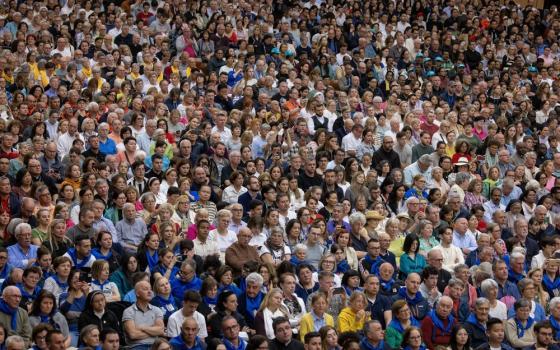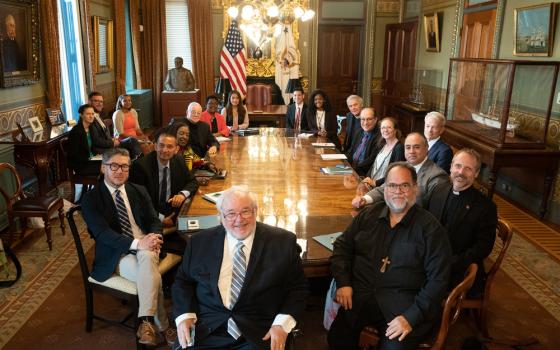THE TRANSFORMATION OF AMERICAN CATHOLICISM: THE PITTSBURGH LAITY AND THE SECOND VATICAN COUNCIL, 1950-1972
By Timothy Kelly
Published by University of Notre Dame Press, $45
The charismatic Bishop Kenneth Untener once said, “What happened at Vatican II might be compared to the great plates shifting beneath the earth.” Its effects were “monumental.” Tectonic shifts do not migrate overnight, and Cardinal Joseph Bernardin captured this temporal dimension when he wrote, “The theological and pastoral currents of the previous decades needed a catalyst to channel them in the direction of building up the church … Pope John XXIII allowed the dynamic forces that were present in the church to be unleashed with full creative and pastoral wisdom. The results were the documents of Vatican II.”
In The Transformation of American Catholicism, Timothy Kelly, an associate professor of history at St. Vincent College, Latrobe, Pa., ingeniously explores Bernardin’s thesis by situating it concretely in the context of his subtitle, the world of Pittsburgh Catholicism. Expressed concisely, Kelly’s basic argument convinces us that the changes in the church attributed to the council were well underway years prior to the council in the lives of the Catholic laity.
------------------------------------------------------------------------------
Read Timothy Kelly's essay in NCR: Pittsburgh Catholics
------------------------------------------------------------------------------
In large part, the strength of his argument rests upon his solid empirical base. He has trawled raw data available from the 1950s to the 1970s -- the diocesan newspaper, parish bulletins, the minutes of many diocesan organizations -- to argue his case persuasively.
Relying on the perceptions and experiences of Pittsburgh Catholics embodied in these resource documents, Kelly describes a ghetto church under siege at the dawn of the 1950s. Dangers to the faith lurked around every corner. The greatest of these were the materialism of communism, and not far behind, the consumerism of unbridled capitalism. The clerical-led defense struggled to build a rampart of devotionalism against these threats to the faith.
What that defense looked like and how it played out can be seen in the following scenario. Kelly reports that at the start of the 1950s the church leadership in Pittsburgh could muster over 125,000 of the laity for public eucharistic devotions and 10,000 for public rosary recitations. By 1955 the eucharistic participants had plummeted to 25,000. Rosary devotees’ numbers had dramatically dwindled as well.
Turning away from the traditional devotional defense, the laity now began to find a new Catholic identity in liturgical reform and social action for justice, and an expanded role in church affairs.
When Bishop John J. Wright was appointed Pittsburgh’s bishop in 1959, he openly embraced this fresh concept of being church. I arrived in Pittsburgh as a young priest in the same year as Wright, and can verify the accuracy of Kelly’s description, that Wright was “clearly a new man for the new era who promised to bring the laity along with him -- or perhaps to accompany them on a journey they had already begun.”
That promise was fully honored when Wright returned to Pittsburgh after the end of the final session of the council in 1965. By 1967 he had launched a diocesan pastoral council to give voice to the priests and laity of the diocese in the conduct of diocesan affairs. Parish council members, themselves elected, were electing their diocesan representatives -- a first in the history of the church. Priest representatives were elected by a recently formed clergy council. Fresh winds of democracy were blowing in the church of Pittsburgh as Wright continued to foster and support the new orientations chosen by the laity even prior to Vatican II.
Wright extended his robust support for the laity’s liturgical, social-justice and ecumenical agendas by calling for a diocesan synod in 1971. In the face of some vehement clerical tantrums, he insisted on elected lay representation on the synod and provided ample opportunity for the laity to have input into the preparation of the synod documents.
In striking contrast to Wright, Kelly points out that for the synod of 2000, the then bishop (Donald Wuerl, now archbishop of Washington), hand- picked all its members. He invited other laity to contribute only after the drafts of working papers had been prepared. Kelly concludes from this instance, “The lay and clerical common effort to create a more democratic church did not survive into the 21st century.”
For progressive Pittsburgh Catholics this retreat from Vatican II renewal had not come as a surprise. The efforts of reactionary forces in the Roman curia to sabotage Vatican II reforms were afoot almost from the outset. One of that reform’s towering figures, the German Jesuit theologian Karl Rahner, spoke of a “wintertime” that had fallen on the church of Rome.
Many Catholics believe that they have been receiving mixed messages from recent popes about the true status the council now holds in the eyes of Rome. Recently the editors of America magazine assured their readers that Benedict XVI upholds the authority of Vatican II. Other Catholics are not so sure. They have been dismayed for years by Rome’s silencing of loyal theologians, its retreat from liturgical renewal, from collegiality, from grass-roots ecumenism, and from strong support for the U.S. Conference of Catholic Bishops.
Lately, many Catholics have been further dismayed by papal eagerness to placate the Society of St. Pius X and other clerical groups who reject outright essential teachings of the council.
Kelly’s research demonstrates that many Pittsburgh lay Catholics, having ratified their vision of what it means to be church, will continue to speak. But will Rome even listen? Kelly does not abandon all hope. Rather, he suggests that the lay Catholic experience of the 1950s and ’60s may prove instructive at these dark moments of crisis in the church -- that what was once achieved by the laity can be achieved again.
Holy Ghost Fr. David L. Smith is professor emeritus at Duquesne University in Pittsburgh.





